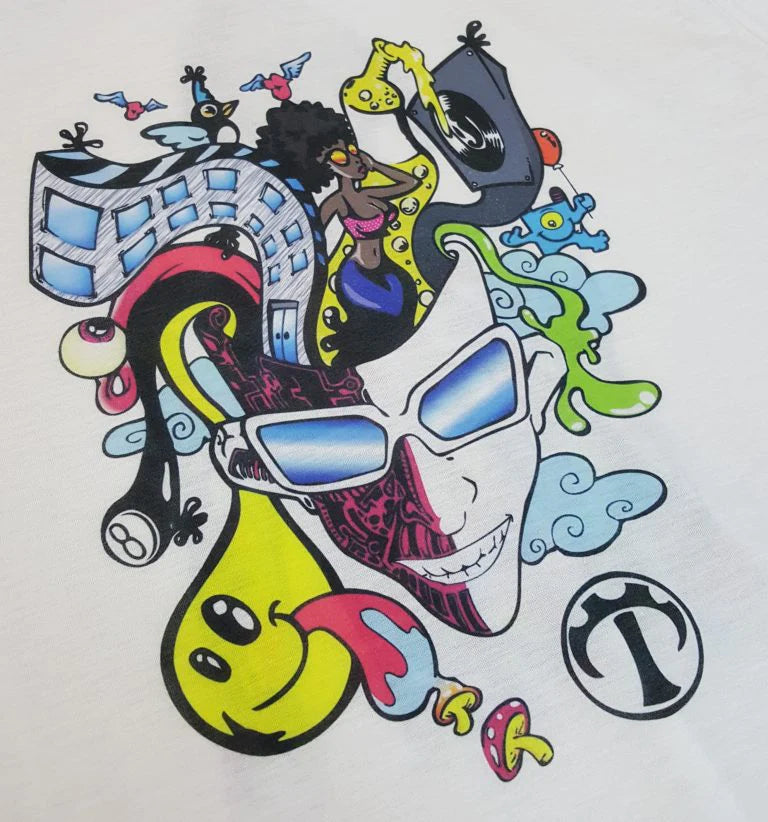Sublimation is a relatively new option in the home market for custom apparel making. Prior to a couple years ago, sublimation was only an option to people who could purchase expensive printers and equipment. Now, there are home options that don’t need to require a small business loan to get started with. We at JSI sell perhaps the best available sublimation printer for home use, the Sawgrass SG400 / SG800 models.
But you may wonder, “Is sublimation something I should get into?”

The answer is definitively yes, however lets address the Pros and Cons of this method of designing.
THE PROS
EASIEST TRANSFER METHOD
Sublimation is by far the easiest transfer method of producing your transfer and applying it to the shirt. You print your image mirrored onto the paper using your Sublimation Printer, flip it over onto the shirt where you want it, then press.
Done.
No weeding, no hassle of dealing with inks and screens, no ink curing, no mess to clean up. Just print, flip, then press. It is that simple.
GREAT FEELING TRANSFER
Sublimation is actually a dye transfer rather than a bonding face film (like HTV) or screenprint ink. For that reason, the print actually dyes into the fabric rather than sitting on top of the fabric, so the feel of the garment after the transfer is no different than before you transferred anything to it.
This also means that the shirt’s breathe-ability is not effected by larger designs.
VERSATILITY
You aren’t limited to just being able to do shirts with sublimation. You can also sublimate on a wide variety of polyester coated materials like metal, ceramic, and glass. This can allow you to sublimate on mugs, vanity license plates, cell phone cases, plates, glass panes, or anything with a polyester coating.
THE COST
Prior to the SG400 and SG800 models, ink yield on the previous generation of Ricoh sublimation printers was generally 3 to 5 cent per square inch. This means that an 11″ x 17″ sheet of paper, if printed to the margins, could cost you anywhere between $5.61 to $9.35 in ink costs. Now, with the newer units, Sawgrass printers have been manufactured to drop that ink yeild cost to 1 cent per square inch, which drops your price to $1.87 on that same 11″ x 17″.
THE CONS
ONLY WORKS ON POLYESTER
100% cotton shirts are completely out of the question, sublimation does not work properly on it.
However, you can sublimate on cotton poly blend apparel. Just note that the further away you get from 100% polyester shirts (where you get the best quality image), the more faded your design will look. Not to mention there are a lot of 100% polyester shirts that feel very similar to cotton shirts now days. See below two shirts that we’ve sublimated on, the one on the left is 100% Polyester, the other on the right is a 50/50 Cotton Poly blend.

BEST RESULTS ON WHITE GARMENTS
Since sublimation is a dye transfer, if you want exact color matching it’s best to put it on white garments. If you try to put it on anything else, any colors lighter than the color of the shirt won’t show up at all, and any colors darker than the color of that shirt will end up mixing with the color of the shirt. Since there is no color darker than black, you cannot sublimate on black shirts.
However,sublimating black on other color shirts seems to work really well for single color designs that you want to have the sublimation effect… or might be too difficult/time consuming to make with HTV. In the end, black shirts are really the only limitation here. Below are two dark color polyester shirts that we’ve sublimated simple black and white designs on.

So as you can see, even through the two major drawbacks, sublimation is still a very suitable option to add to your production. No additional software is required with sending designs to print (Sawgrass offers all the software needed to print the right ink profiles for free with the printer) but it is recommended that you also use an image editing or designing software for the best results (such as Photoshop, Illustrator, CorelDraw, GIMP, etc).
As far as equipment goes, this is definitely a transfer method that will require owning a heat press for, however as most of our customers own one already for HTV transfer or Screenprint Ink curing… most of our customers already have half of the equipment necessary for this process.
While we do sell the equipment, we also offer single order sublimation print jobs so you can test out the transfer method at home to see how it works for you. Simply email prints@jsisign.com to inquire about our sublimation printing pricing.

